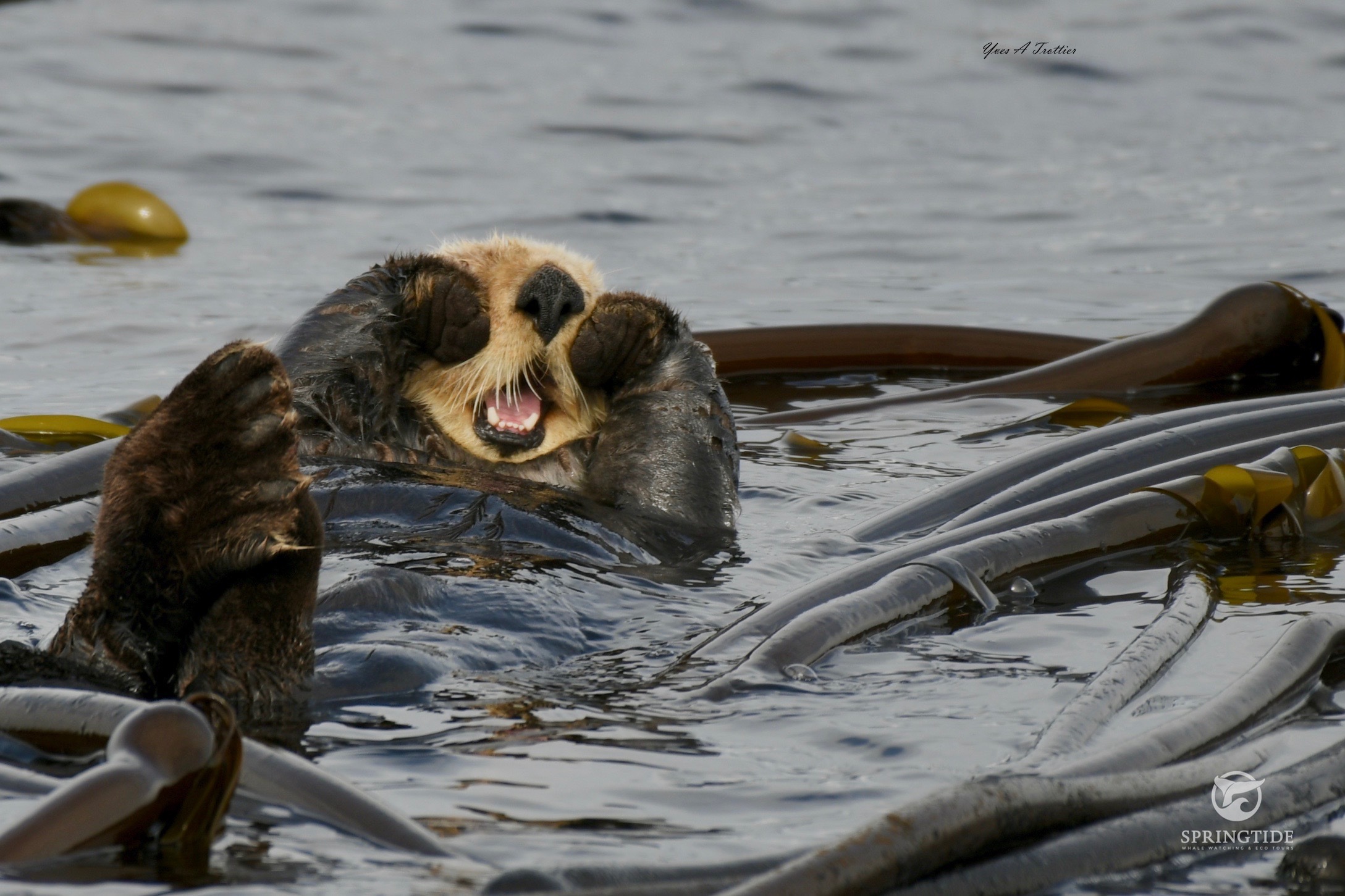The sea otter is a species on the west coast that is currently building its success story! The heaviest member of the weasel family was hunted almost to the point of eradication from 1741 to 1911. It was hunted for its luxurious pelt that can have about 100,000 hairs per square centimeter. In comparison, humans have about 100,000 hair follicles over their whole head! By about 1929, there were no sea otters found from Alaska to California. In B.C., government biologists on the west coast of Vancouver Island released 89 individuals between 1969 and 1972. By 2008, their population was estimated to have grown to nearly 5000 individuals!
This increase in the sea otter population means big changes for their ecosystem as they are what is referred to as a keystone species. A keystone species is one of extreme biological significance in contrast to a relatively low biomass. Their biological significance is due to their food choice, sea urchins. Sea urchins feed on giant kelp and can destroy whole kelp forests when they lack a natural predator. Kelp forests are integral to the health of B.C. coasts and provide habitat, food, and nursery grounds for a wide variety of species.
While their numbers are growing on the west coast, they are not too often seen in the southern waters around Victoria. However, we are lucky that at least one sea otter has made a home in the kelp forests just southwest of Victoria in an area known as Race Rocks Ecological Reserve. Often, when spotted, the sea otter fondly dubbed “Ollie” can be seen “scrubbing” his facial hair which is common behaviour for sea otters. This scrubbing motion adds air down to the roots of their hair follicles which provides them with insulation from the cold!
